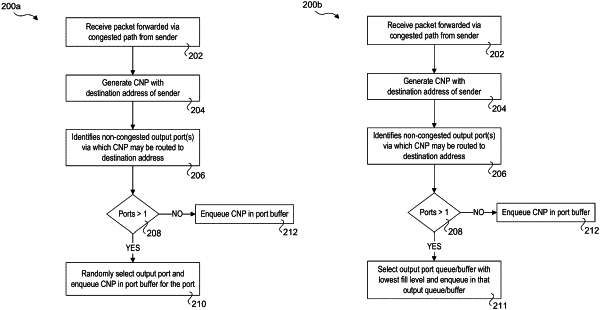| CPC H04L 47/115 (2013.01) [H04L 43/106 (2013.01); H04L 45/22 (2013.01); H04L 45/28 (2013.01); H04L 45/60 (2013.01); H04L 47/122 (2013.01); H04L 47/323 (2013.01); H04L 49/70 (2013.01)] | 18 Claims |

|
1. A method implemented in a data center including a plurality of endpoints coupled in communication via one or more networks comprising a plurality of interconnected switches, comprising:
at a switch,
receiving a packet sent from a first endpoint destined for a second endpoint;
detecting an existing congestion condition or an approaching congestion condition along a path used to forward the packet;
generating a congestion notification packet (CNP) including a destination address for the first endpoint;
detecting that one or more forwarding paths to the first endpoint are congested forwarding paths;
employing an adaptive routing mechanism to select an output port on the switch such that a forwarding path other than the one or more congested forwarding paths is used to forward the CNP to the first endpoint; and
sending the CNP outbound onto a network link coupled to the output port that is selected.
|